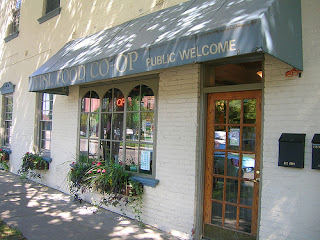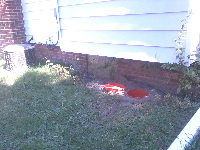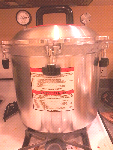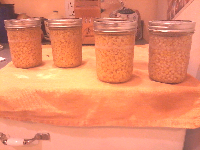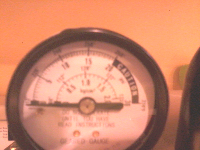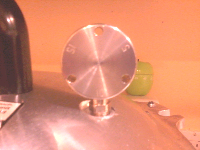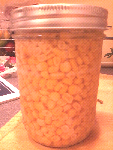I've been trying to bike to work more frequently since I got my Giant Escape W 2010 in May.
(Every time I type Giant Escape, I think of a giant escaping from something. It sounds rather silly, typed or out-loud..) My bike is pretty lightweight so I can push it up the stairs to our second floor office, even with panniers on!
I live very close to where I work- my commute is only about 1-2 miles, depending which route I take. Although it's not a far distance, it's also a silly distance to drive. I've been averaging a bike commute of 1-3 times per week in the last several months, and I'm trying to increase that even more. I like the exercise, even if it is only for a few minutes, I like the reduced fossil fuel expenditure, and I like not driving my car to places I could easily get to otherwise.
 |
| GIANT ESCAPE!!!! |
Today, I passed what I consider to be a (beginner's) cycling milestone:
I learned to change my tube/tire!
Rode to work today. It was about 45-50 degrees out, and pretty windy. Rainy too! I keep telling myself,
"Part of developing into a true cycling badass is riding in weather of all types".
I got about 3/4's of the way to work today and suddenly noticed I had a lumpy back tire (or at least that was my professional cycling diagnosis of it). I had just filled up the tube with air this morning, so I knew it wasn't just running low. Luckily I was close to work, so I hopped off, and walked my bike to the local bike shop, ready to have my friendly neighborhood bikeguys fix it for me- so dependent and lazy! The bike store opened at 11 and there I was at 10am, so I hauled the bike up the stairs to my office and laid that baby out in the hallway! I was going to fix it myself with my mad skillz.
Back-story: I recently took a Bicycle Maintenance class at my local REI, and happened to be nervous that my first "practice" with changing my tire would be when I was alone, in the dark, on some creepy street!
So it ended up being fortuitous that my bike chose today to weird-out. Luckily I had my newly-assembled bike tool kit (Thanks, Dad!), and so I went to it. In the middle of my office building's hallway, I propped up the bike, removed the back bike rack, removed the wheel, removed the chain, removed the tire and tube. Yeah! I inspected the tire and tube for leaks, to no avail. I busted out my air capsule things and tried to inflate the tube, which I didn't do so well at. At this point, the bike shop had opened, so I grabbed the tire, tube, wheel, and headed over to see if they had any ideas about this mysterious flat.
Nice bikeguys inspected the tire and tube, inflated the tube, and couldn't find a leak anywhere! They did tell me that my emergency air tool thing was for a presta valve, not a schraeder: whoops. So although tube inflation didn't work for me, it's not because I sucked at it, it's because I bought the wrong thing- always a silver lining! They assembled the wheel for me and inflated it, and I took it back to the office. I re-installed it on my bike, and upon putting the air valve cap back on, notice a hissing, leak-type noise. I took off the cap and looked inside, and silly me: the aircap had a rock in it. Out went the rock, on went the air cap, away went the hissing, and off I went on my bike!
Now I can confidently say that I can change my tube or tire! I may have wasted some time with overzealous tire removal, but happily I don't have a leak, and now I've practice a new skill. I also got to reflect on the situation- if I had to actually rely on bike transportation, I would really need to know how to fix a bike so I could continue getting where I need to go, even in a pinch. Since I've been romanticizing (in a way only an environmentalist could do) life on a bike, without a car to call my own, this was a good first step in crisis management.
Did the resolving the problem take a long time?
Yep!
Did I want to call all my bike friends for help instead of be inconvenienced for more than two minutes?
Kind of!
Was it ultimately a good lesson and character builder?
Yes it sure was!
Good day!


